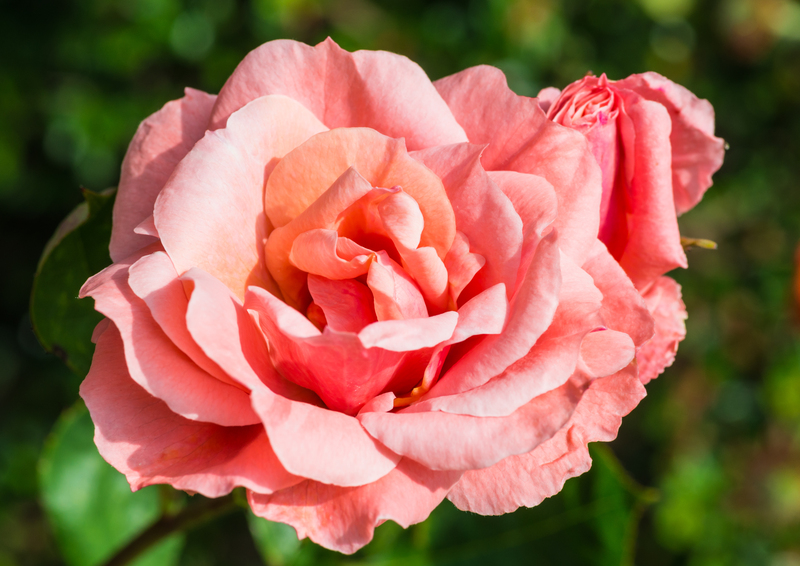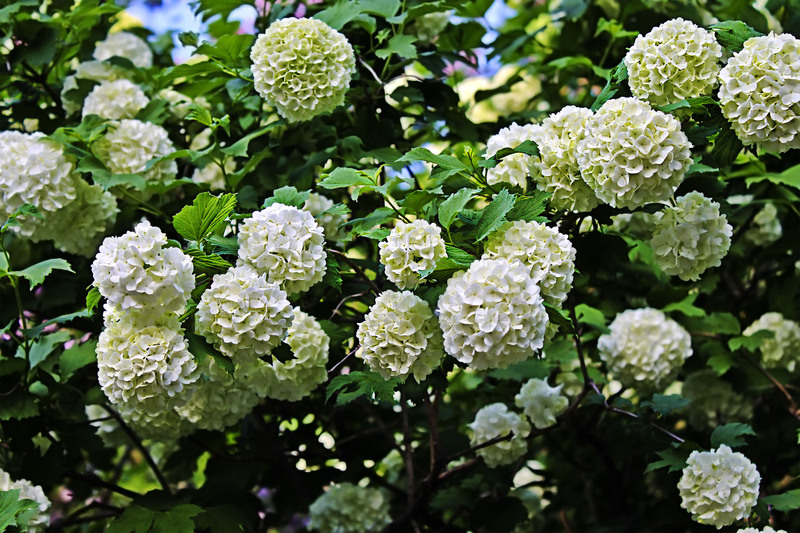How Container Gardening Can Green Up Your Space
Posted on 14/06/2025
How Container Gardening Can Green Up Your Space
Looking to bring more nature into your workspace, home, or even a tiny balcony? Container gardening might be the solution you're seeking. This creative and flexible gardening method brings life, beauty, and even homegrown produce to places where traditional gardening might not be an option. In this comprehensive guide, we'll explore how container gardening can help green up your space, regardless of your environment, experience level, or space limitations.
What Is Container Gardening?
Container gardening is the practice of growing plants in pots, tubs, baskets, or other containers instead of directly in the ground. This method allows you to enjoy plants indoors or outdoors, and it's perfect for people with minimal space or those wanting a mobile garden.
- Indoors: Apartment dwellers or those with limited outdoor space can use containers to add greenery to windowsills, tables, and sunny nooks.
- Outdoors: Patios, decks, porches, and even rooftops or balconies can explode with color and life thanks to planters and pots.
- Flexibility: Whether you're growing flowers for beauty, herbs for cooking, or vegetables for nutrition, container gardening adapts to your needs.

Why Choose Container Gardening?
The popularity of container gardening has soared for good reason. Here are some compelling advantages:
1. Space-Saving Solution
Not everyone has a backyard. Gardening in containers allows you to use any available horizontal or vertical space--including windowsills, shelves, and hanging baskets--to nurture plants. You can even create multi-level gardens by stacking or hanging containers.
2. Greening Up Urban Spaces
In cities, greenery is scarce. Container plants can transform a drab balcony, rooftop, or even fire escape into a vibrant oasis. Container gardens add beauty and even help clean the air, offering psychological and environmental benefits.
3. Mobility and Flexibility
Plants in containers are portable. If you move homes or apartments, your garden can travel with you. You can also rearrange your plants to suit your climate, sunlight, and decor preferences through the seasons.
4. Easier Maintenance
Because container gardens are contained, it's easier to control soil quality and drainage. Pests and weeds tend to be less of a problem, and you can tailor the water and nutrients exactly to each plant's needs.
5. Creative Expression
Pots come in all shapes and sizes, allowing you to match your garden to your personality and style. From chic modern planters to rustic upcycled buckets, the options are endless!
What Plants Are Best for Container Gardening?
The great news is, most plants can be grown in pots with the right care. Here are some of the best options for greening up your space with container gardening:
- Herbs: Basil, mint, parsley, rosemary, thyme, and chives thrive in containers and offer fresh flavor for your kitchen.
- Vegetables: Tomatoes, peppers, lettuce, radishes, spinach, and even dwarf beans are ideal for pots.
- Flowers: Petunias, begonias, pansies, geraniums, and marigolds create a cascade of color.
- Succulents and Cacti: Perfect for sunny spots and requiring minimal water, these quirky plants are striking and easy-care.
- Small Fruit: Strawberries, blueberries (with acidic soil), and dwarf citrus trees can thrive in appropriately-sized containers.
- Indoor plants: Snake plants, pothos, peace lilies, and ferns are top picks for adding lushness indoors.
How to Start a Container Garden
Step 1: Select the Right Containers
Almost anything that holds soil and drains well can serve as a planter--from classic clay pots and wooden boxes to upcycled buckets and colanders. Choose containers with at least one drainage hole. The size should accommodate the roots and allow for growth. Generally:
- Small pots (6-8 inches) suit herbs and small annuals.
- Medium pots (12-18 inches) are ideal for flowers or a mix of herbs and veggies.
- Large pots and tubs work well for tomatoes, peppers, or small fruit trees.
Step 2: Use Quality Potting Mix
Garden soil is too heavy for containers. Use a high-quality container gardening mix or make your own by blending peat or coconut coir, compost, and perlite or vermiculite for aeration. Add a slow-release fertilizer for best results.
Step 3: Choose Suitable Plants
Consider your sunlight and climate, and look for varieties bred for containers. Compact or "dwarf" types perform best and stay tidy in a pot.
Step 4: Planting and Arranging
- Fill containers about two-thirds full with potting mix.
- Gently remove plants from nursery pots; loosen roots if compacted.
- Arrange plants for maximum beauty and complementary growth habits (tall plants in the center or back, trailing around the edges).
- Fill in around roots with potting mix, pressing lightly.
- Water thoroughly after planting.
Step 5: Water and Feed Regularly
Pots dry out much faster than garden beds, especially in summer. Check soil moisture daily and water as needed. Feed plants every 2-4 weeks, or as recommended by your fertilizer.
Creative Container Ideas to Green Up Any Space
Vertical Gardens
Maximize your space with vertical container gardening. Try:
- Hanging baskets of trailing flowers or strawberries.
- Wall-mounted planters with herbs or succulents.
- Pocket planters made of felt or recycled plastic to hang on fences or balconies.
- Stacked shelves or ladders holding pots of varying sizes.
Repurposed Containers
Think outside the pot! Greening up with containers is a great opportunity to reuse materials. Try:
- Old teapots, mugs, or tins for quirky tabletop planters.
- Wooden crates or pallets for rustic charm.
- Plastic bottles cut into DIY self-watering planters.
- Baskets lined with plastic and filled with flowers.
Indoor Edible Gardens
Short on outdoor space? Use your windowsill to grow:
- Kitchen herbs: Basil, chives, and cilantro love sunny spots.
- Leafy greens: Lettuce and spinach can thrive on a broad, bright windowsill.
- Microgreens: Sprout seeds in shallow trays for fast, nutritious harvests.
Benefits of Container Gardening for Health and Wellbeing
Beyond just aesthetics, container gardens offer remarkable physical and mental benefits:
- Stress Reduction: Studies show that caring for plants lowers stress and boosts mood.
- Cleaner Air: Many indoor plants purify the air, absorbing toxins and increasing oxygen levels.
- Fresh Produce: Harvesting homegrown herbs and veggies supports healthier eating and sustainability.
- Creative Outlet: Arranging and tending a container garden encourages creativity and relaxation.
- Connection to Nature: Even in an urban setting, bringing plants into your life fosters connection to the natural world.
Common Challenges and Solutions in Container Gardening
1. Overwatering and Underwatering
Container plants are sensitive to water balance. Always check soil moisture before watering, and ensure your pots have drainage holes to prevent root rot.
2. Nutrient Depletion
Potted plants use up nutrients faster than those in the ground. Top-dress with compost or use a liquid fertilizer every couple of weeks.
3. Temperature Stresses
Since pots heat up or cool down quickly, monitor temperature swings. On hot days, provide shade or move containers to avoid overheating; in cold snaps, bring them indoors or insulate with bubble wrap.
4. Limited Root Space
Choose containers big enough for your plants and repot growing specimens as needed. Regularly divide perennials and trim roots if necessary.
5. Pests and Diseases
Inspect regularly for insects and signs of mold or rot. Remove affected leaves promptly and use natural remedies where possible.
Expert Tips for Successful Container Gardening
- Group plants with similar needs (sun, water, nutrients) in the same container.
- Rotate containers for even sunlight exposure and to prevent leggy growth.
- Don't overcrowd--give each plant room to grow!
- Mulch the surface with pebbles or bark to retain moisture and reduce weeds.
- Enjoy seasonality: swap out tired plants and keep your display fresh year-round.
Eco-Friendly Container Gardening Practices
Greening up your space should also be kind to the environment! Try these sustainable approaches:
- Reuse and recycle containers instead of buying new ones.
- Make your own compost for potting mixes and mulch.
- Capture rainwater for plant irrigation.
- Choose organic seeds and natural fertilizers to avoid chemicals.
- Grow pollinator-friendly plants like lavender and marigolds to support bees and butterflies.

Inspirational Container Garden Ideas
Urban Balcony Retreat
Create a mini escape with tall bamboo in large pots, draping flowers in hanging baskets, and a collection of fragrant herbs at hand's reach.
Window Box Wonderland
Use colorful pansies, trailing ivy, and upright grasses to create a constantly changing display outside your window.
Rooftop Vegetable Patch
Mix tomatoes, peppers, lettuce, and fragrant basil in raised tubs. Enjoy fresh salads and salsas all summer long!
Cozy Indoor Jungle
Group snake plants, philodendrons, ferns, and pothos in decorative pots to turn your living room into a serene escape.
Conclusion: Embrace the Joy of Container Gardening
Whether you have an apartment balcony, a small backyard, or just a windowsill, container gardening provides a fun, rewarding way to green up your space. With the right containers, soil, and plant choices, it's easy to create a beautiful, functional, and sustainable urban oasis. Improve air quality, lift your mood, and enjoy the satisfaction of nurturing life, all with portability and endless creative possibilities.
Start small or dream big--however you approach container gardening, every plant you grow brings you closer to a greener, healthier, and more beautiful space.
Ready to begin?
Pick up a pot, choose your plants, and discover how container gardening can transform your world--one green leaf at a time!

